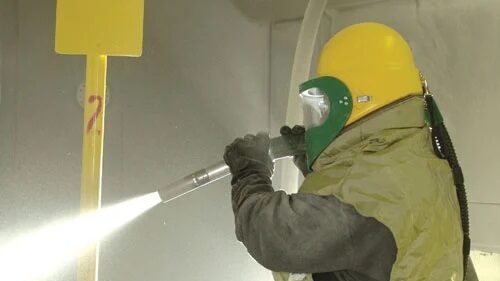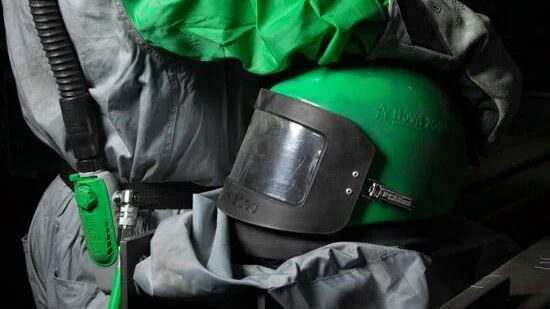Abrasive Blasting Respirators, or blasting helmets, must be NIOSH approved. Paraphrase of the NIOSH regulations: “The Type-CE supplied air respirators are designed to protect the operator’s head and neck from impact and abrasion from rebounding abrasive material, which do not hinder the vision and permit easy access to external surface for cleaning.” Most of the current blasting helmets also meet the ANSI standards for head protection and for velocity eye protection. Note: Class D breathable air must be supplied and monitored according to NIOSH and OSHA regulations.
Blasting helmets, over the past few years, there has been a number design and engineering innovations. Today’s helmets are much lighter and more comfortable than the previous models. The field of vision has been increased. The lens packages are easier for personnel to install and operate. The air flow within the blast helmets has been improved to provide even distribution of air into the breathing zone and reduces lens fogging. Tinted lenses are also available for most blast helmets.
Air supply for operators can come from compressed air, ambient pump,s or powered air purifying respirator systems (PAPRs).
Most Common Air Supply & Respiratory Protection:
- Blasting Helmets (Abrasive Blasting Repsirators) – must be NIOSH approved
- PAPR (Powered Air Purifying Respirator)
- Reusable Respirators – half mask, full face, soft hoods, or helmet models available
- Disposable Respirators – dust masks and disposable respirators, such as N95s
- Supplied Air
- Air Filters
- Carbon Monoxide Monitors
- Air Flow and Climate Control Tubes



